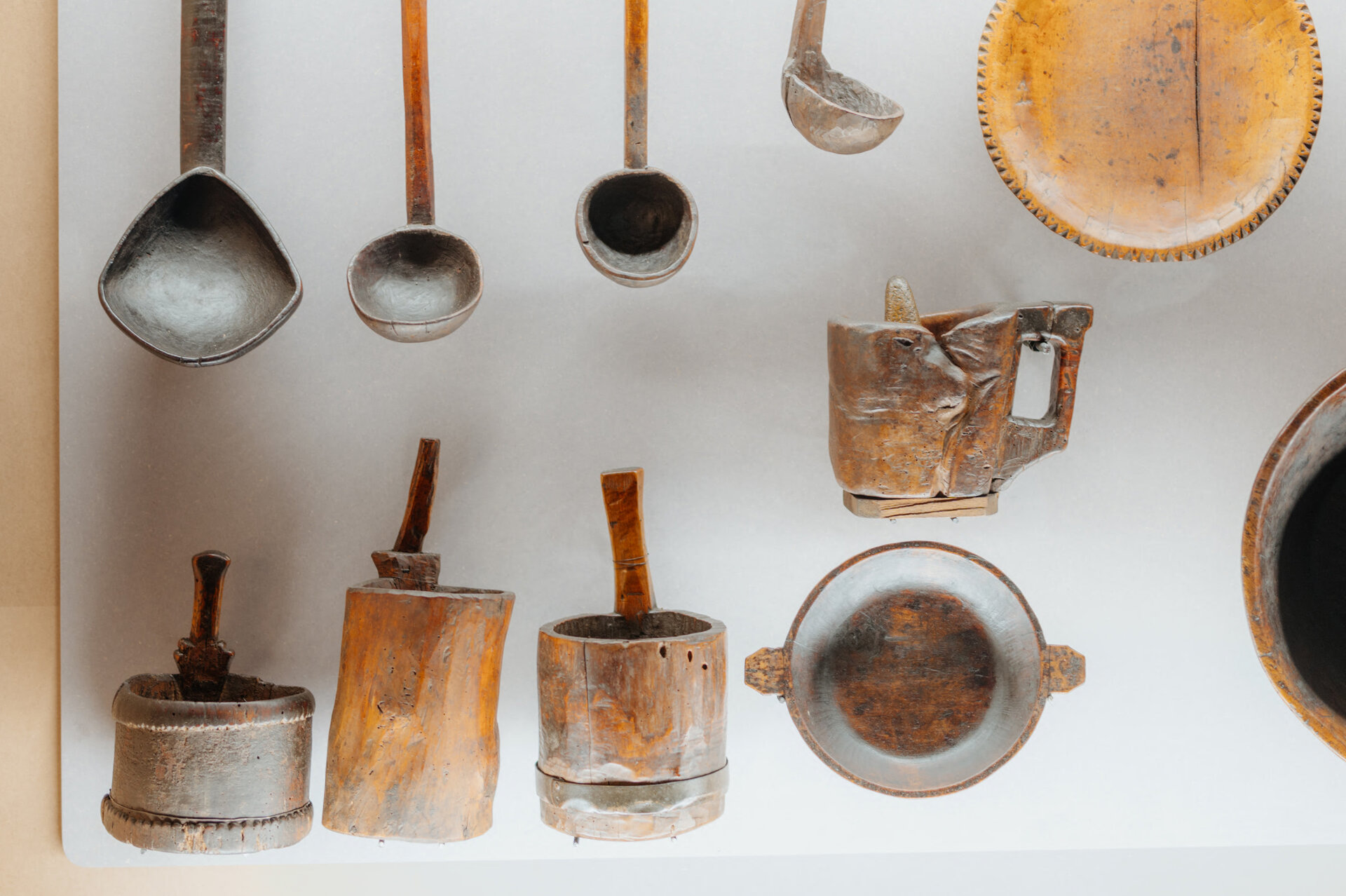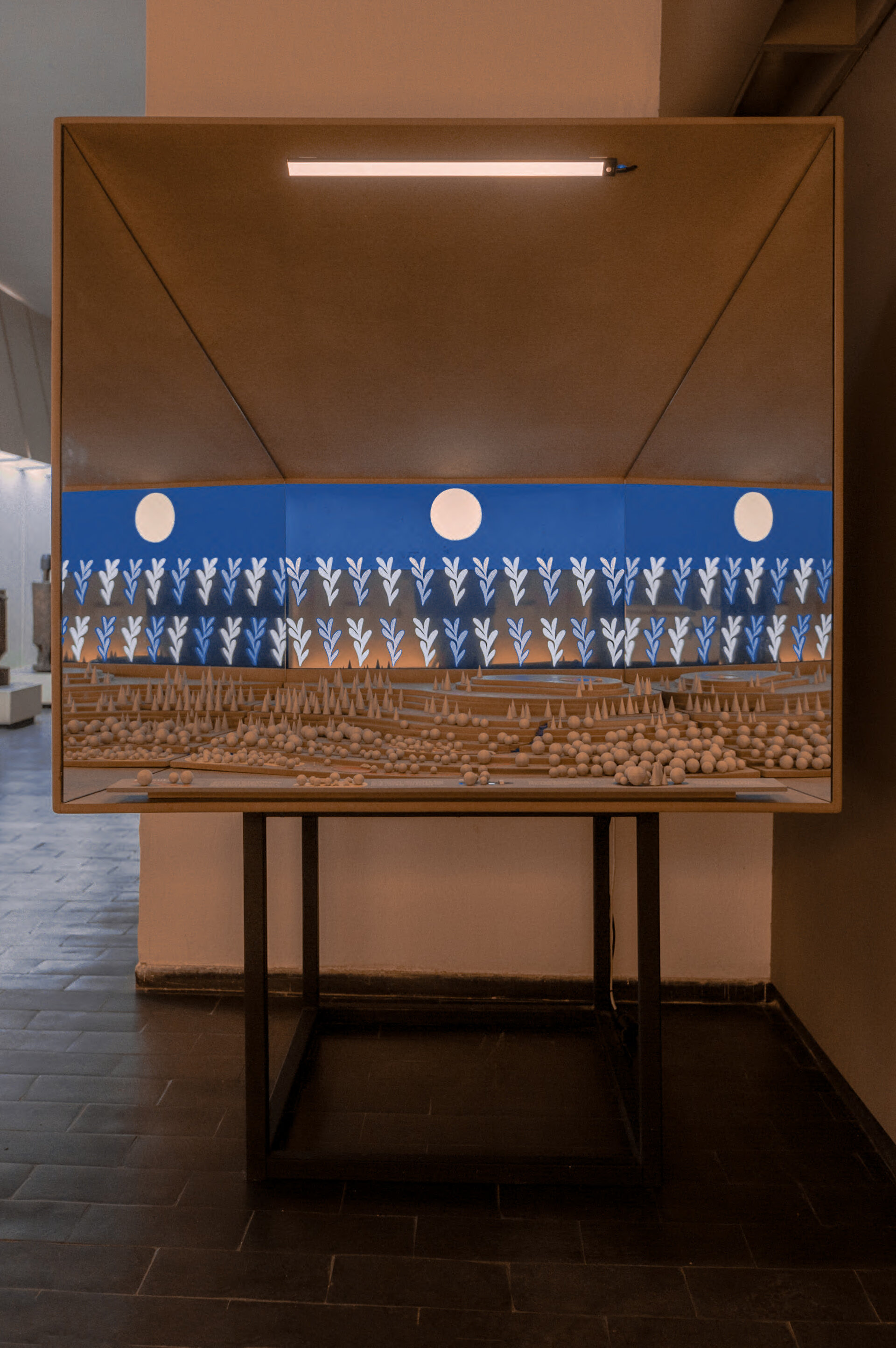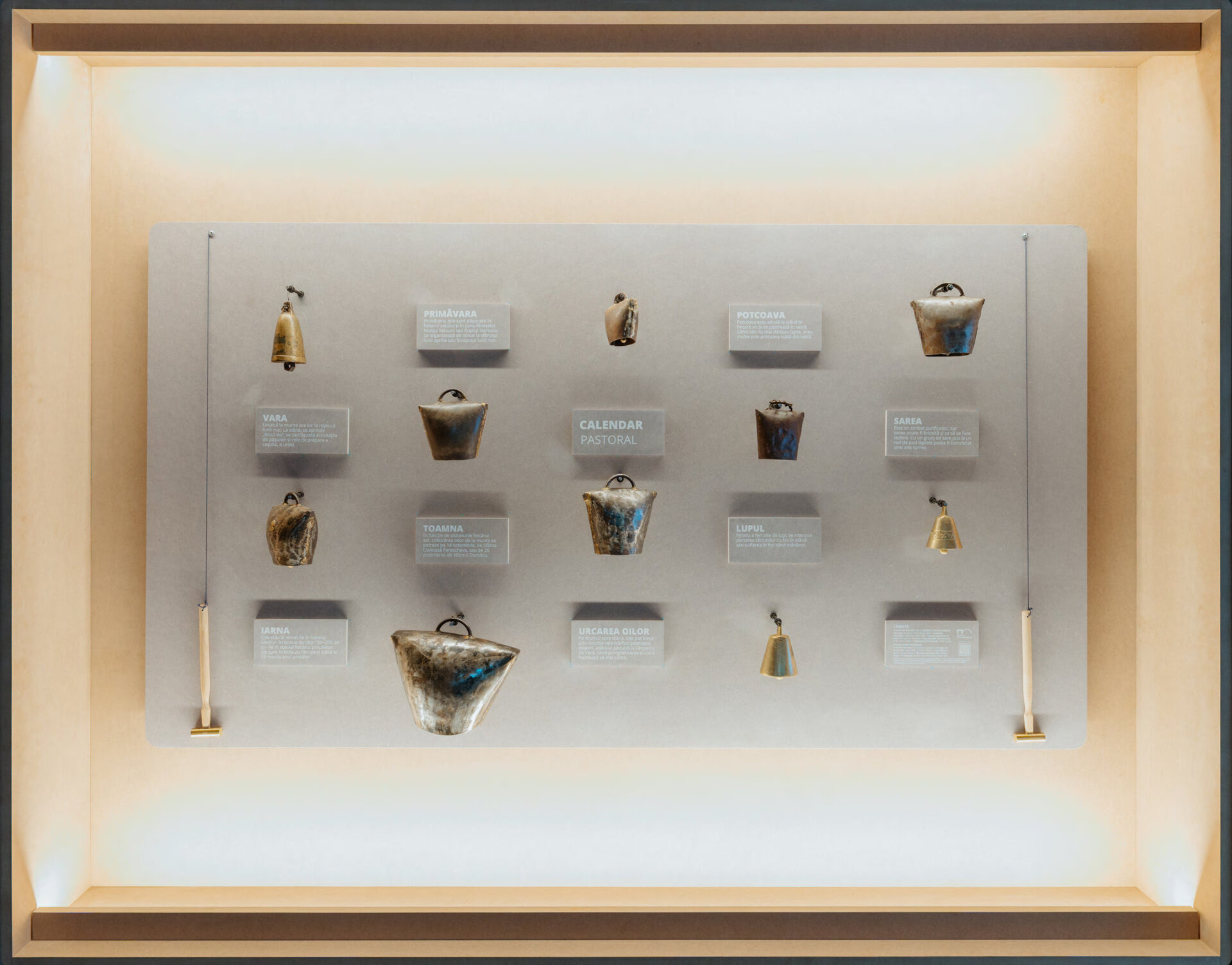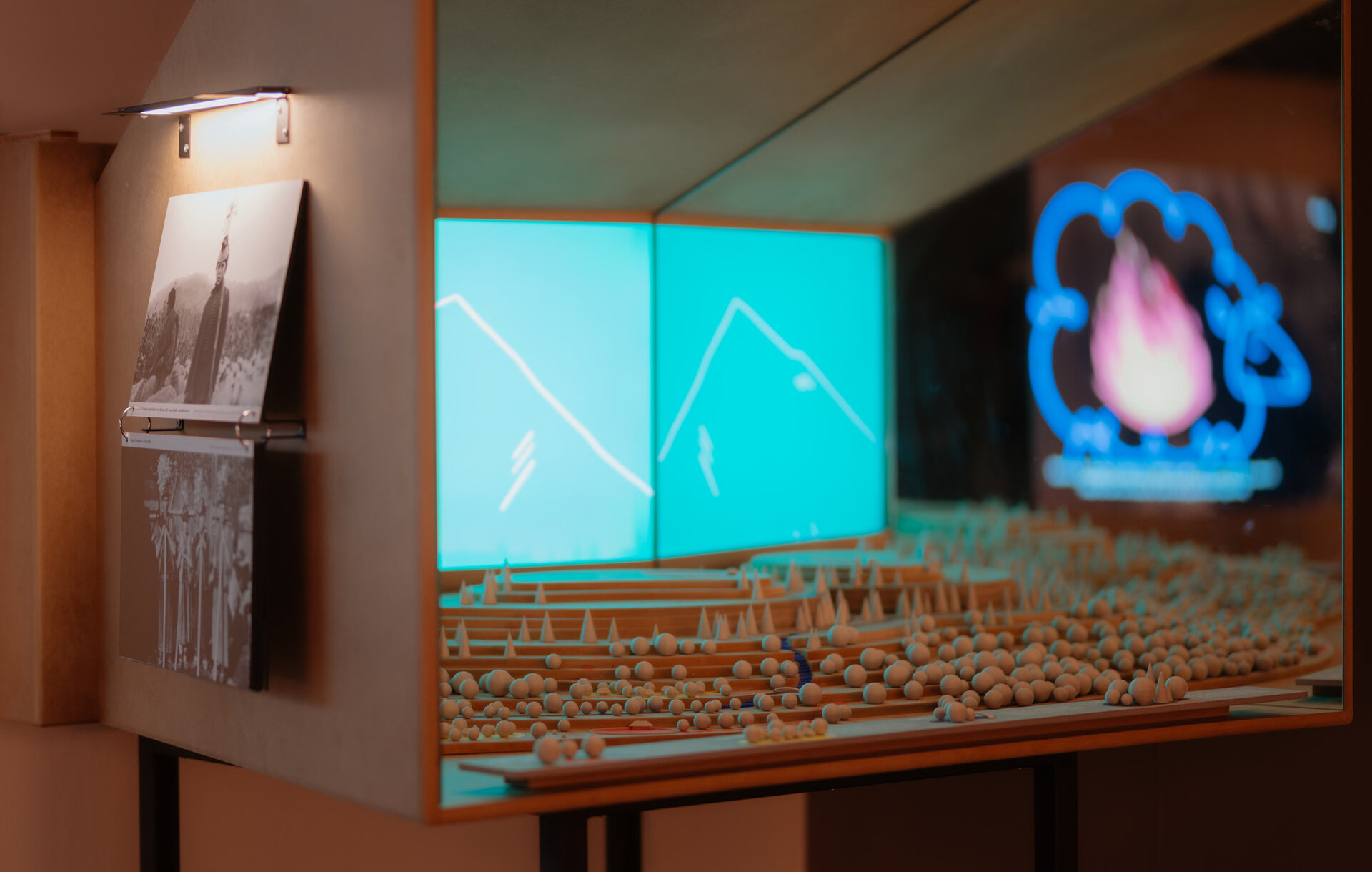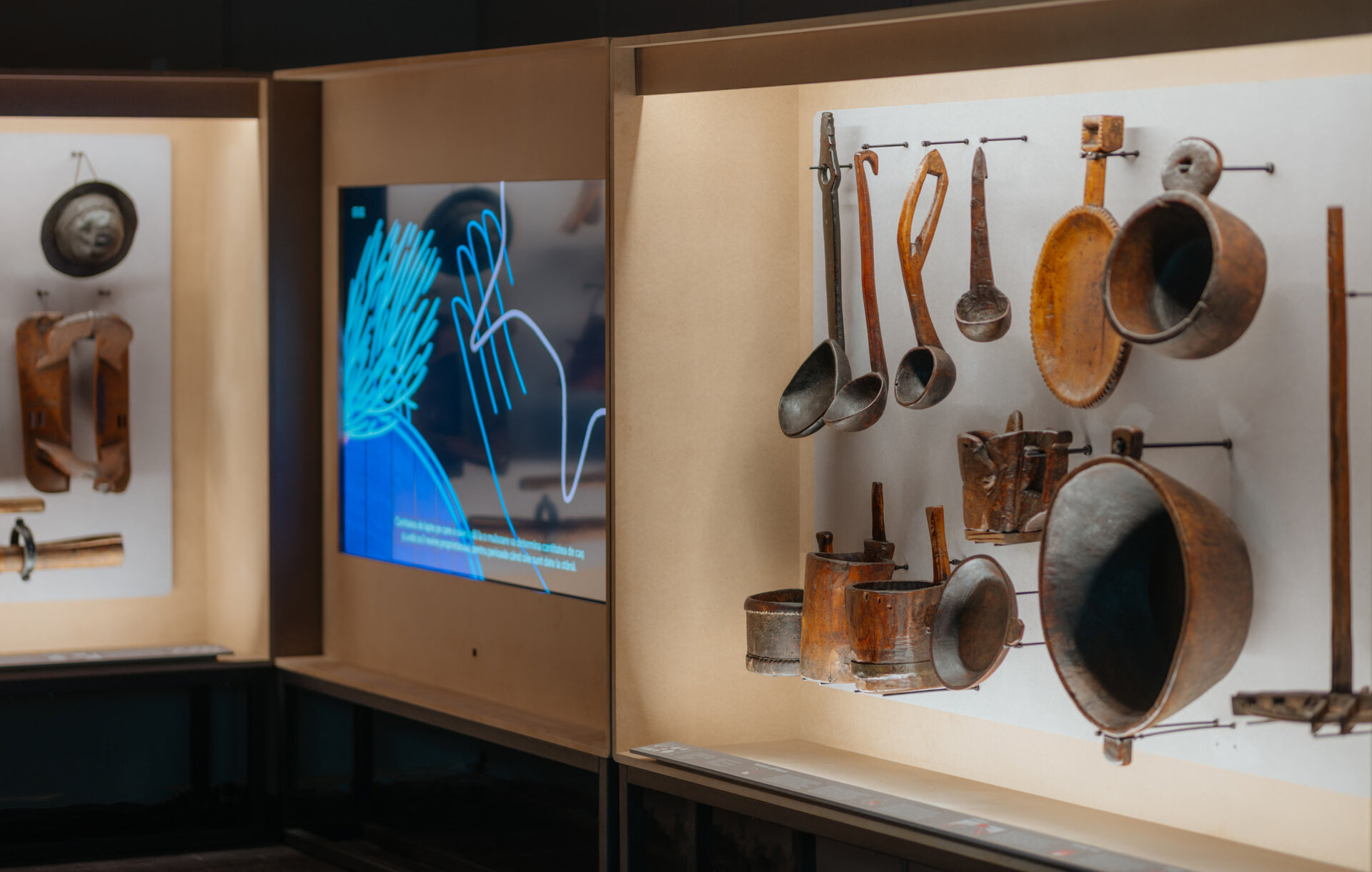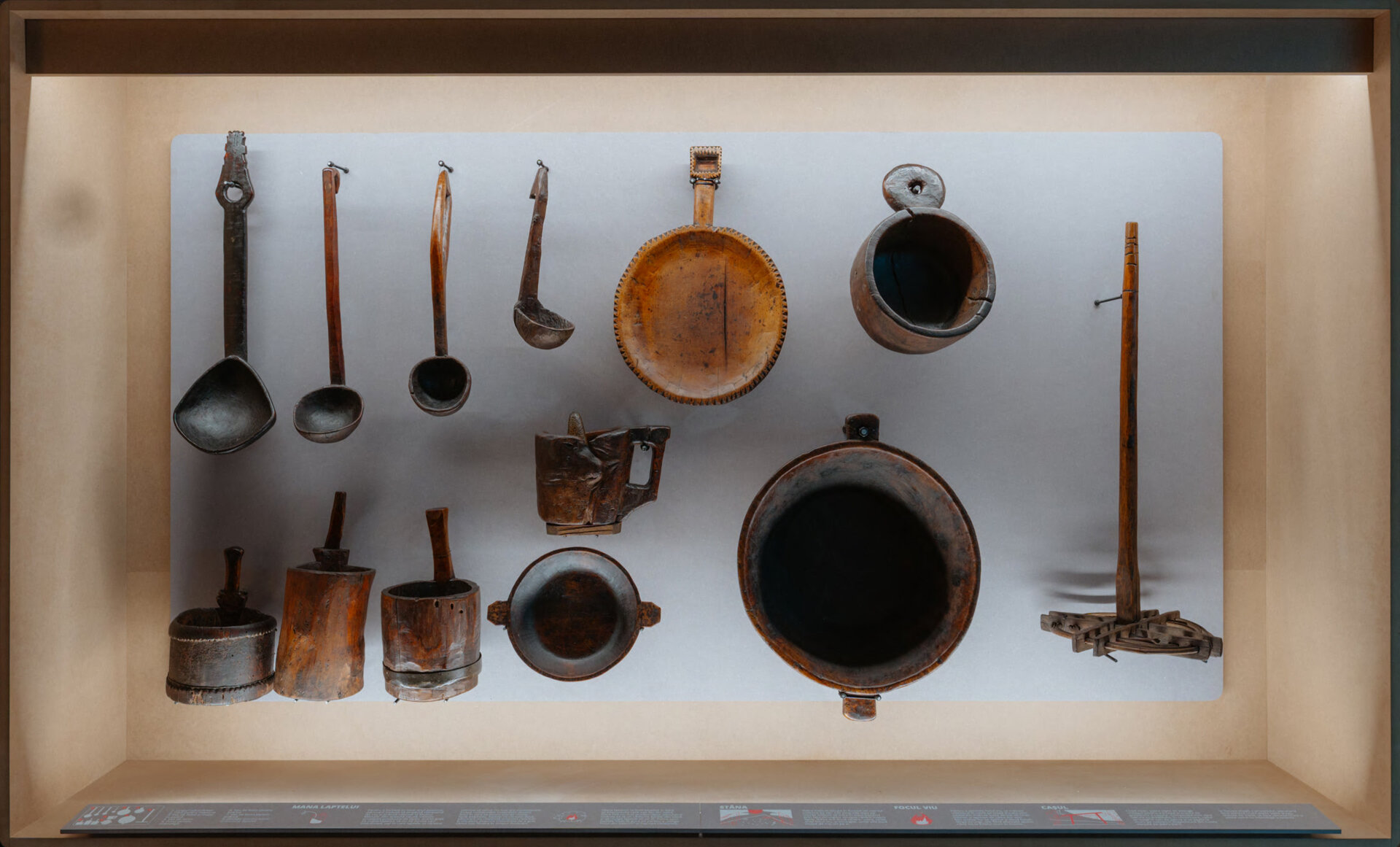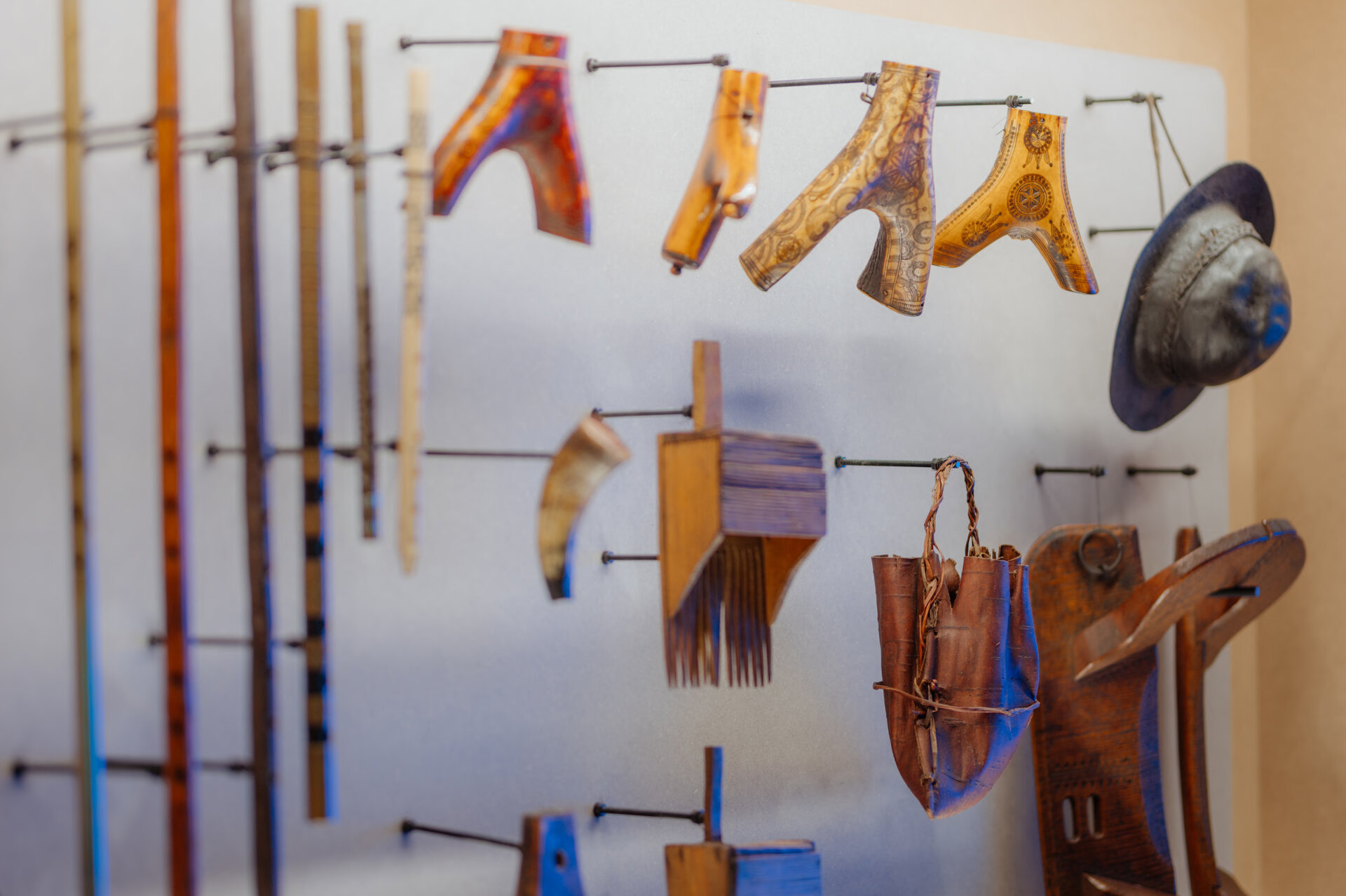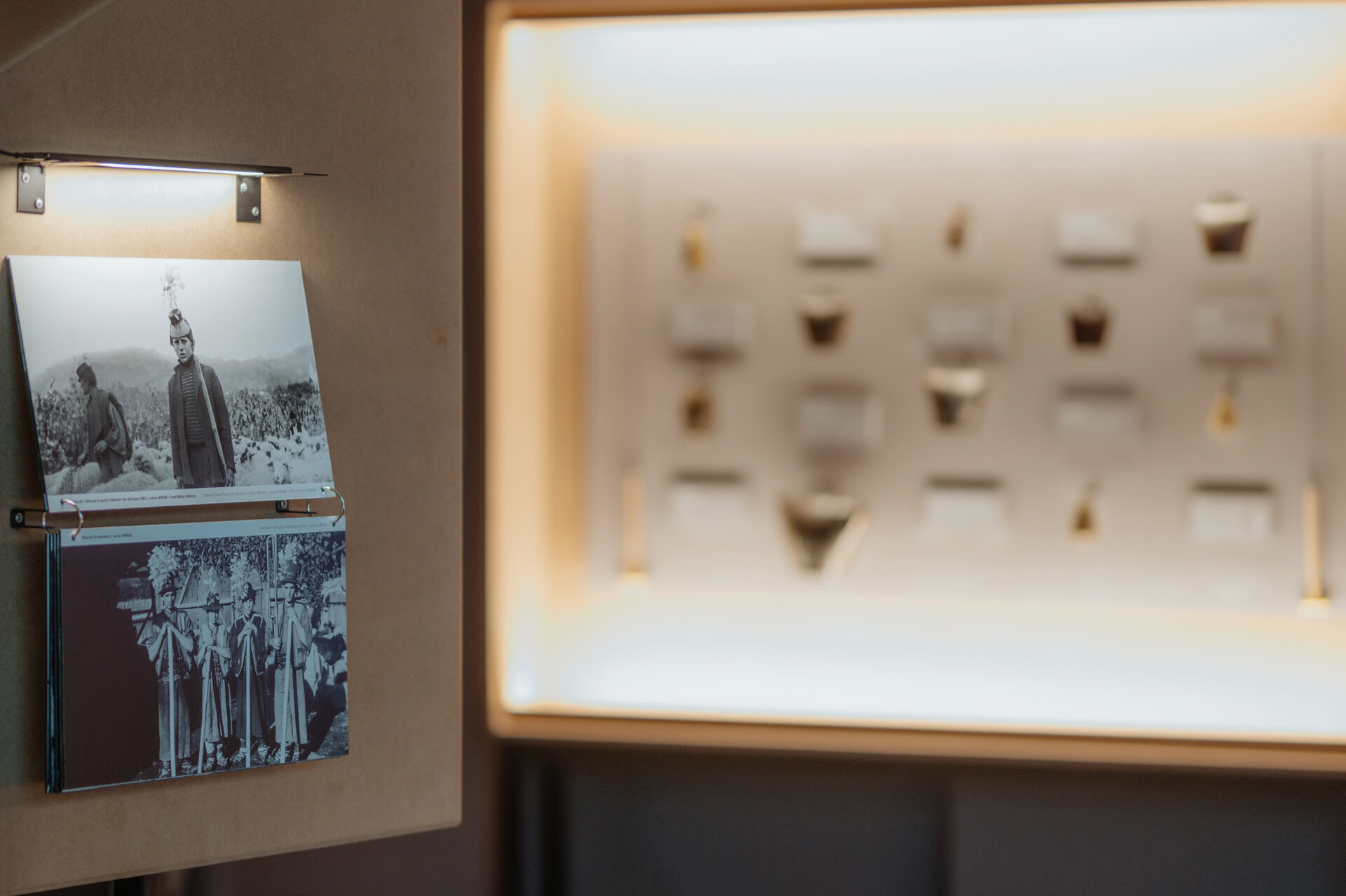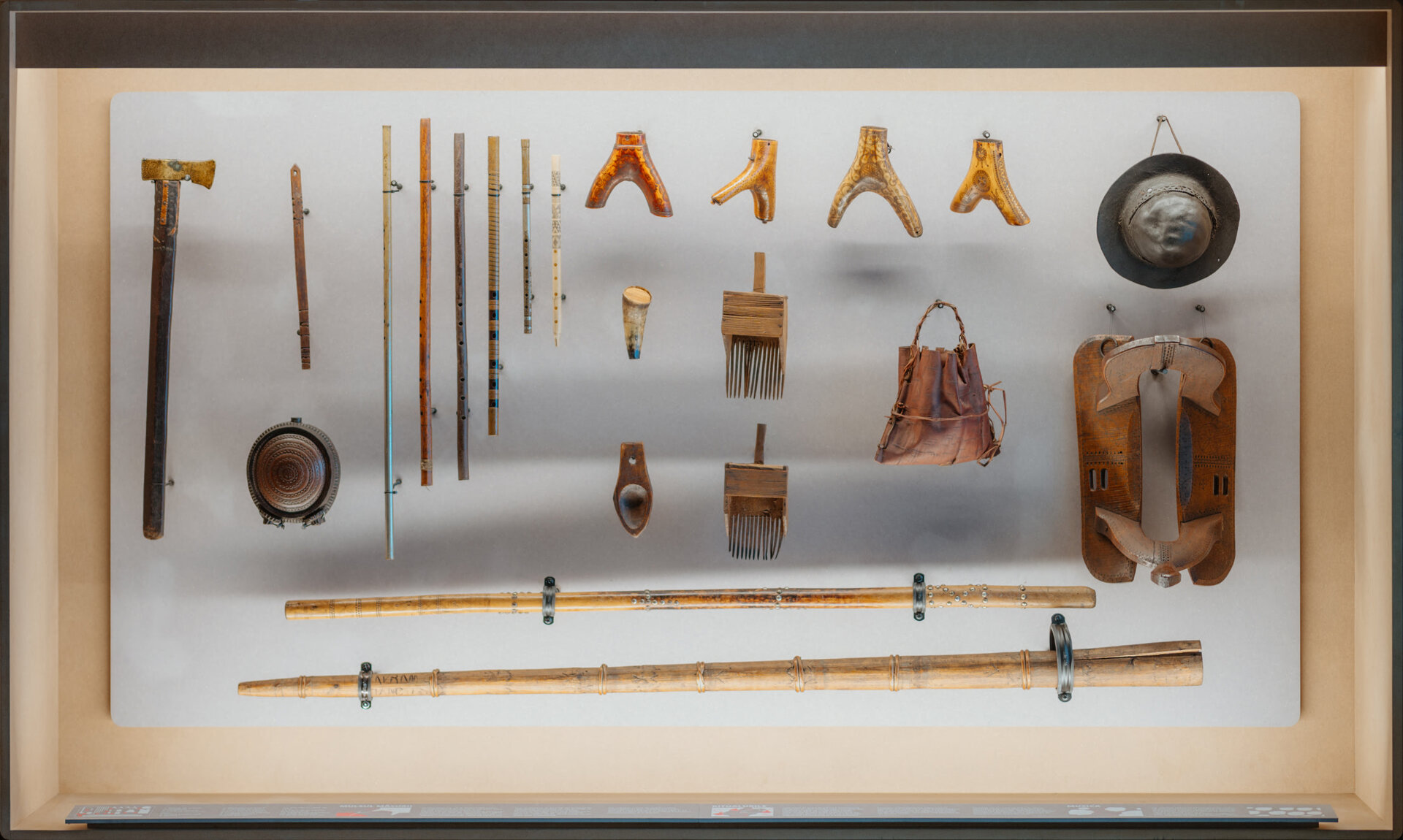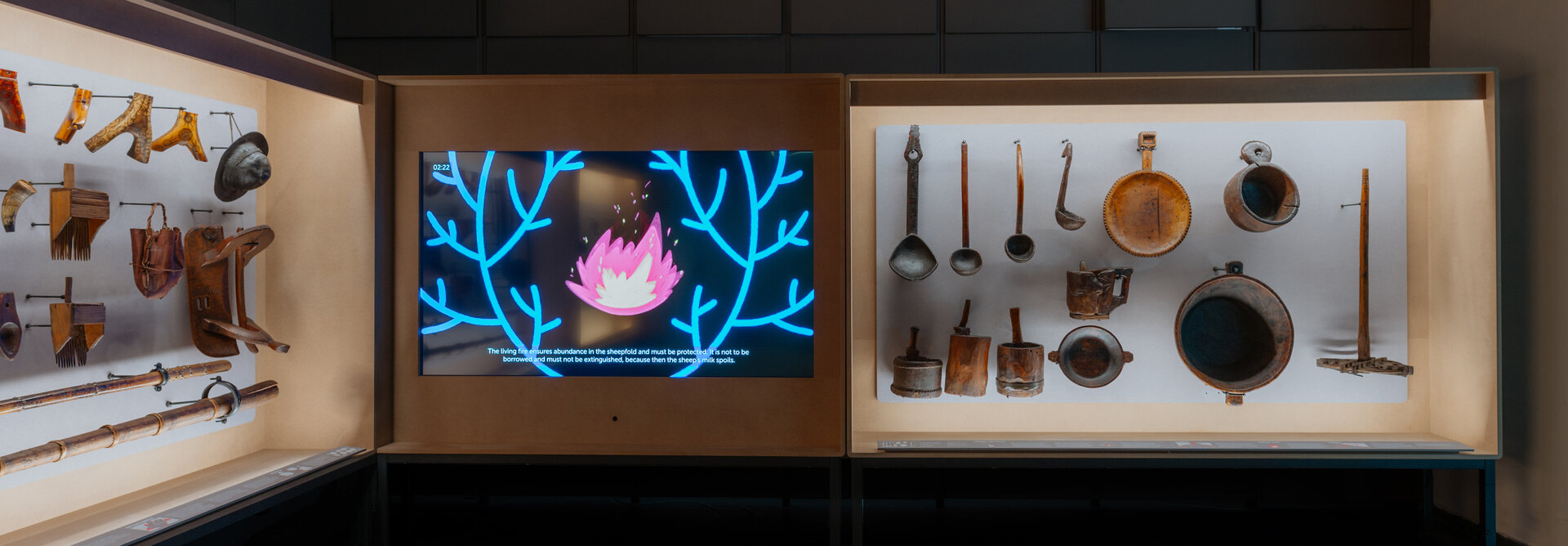
- Nomination for the “Interior Space Architecture / Exhibition and Scenography Design” section
Pastoral Calendar
Authors’ Comment
As in all other regions of the country, in Maramureș, shepherding is a deeply ritualized practice, which organizes the life of the village and the one of the herdsmen every season around the production of milk - the element on which the success of the pastoral year depends. The manna - which represents the quality of the milk - depends not only on the shepherd’s ability to look after the sheep, but also on untamed nature, wild animals or even mythical creatures that can endanger the herd or milk production. All these forces - natural or magical - must be tamed by rituals known only to local people. The Pastoral Calendar exhibition invites the visitor into the ever-changing world of the Maramureș shepherds, recreated from symbolic elements and presented through visual, auditory and tactile means, allowing an intuitive understanding of this archaic world.
The seasonal commute between the villages and the sheepfold is captured by an animation that encompasses both aspects of herd-care and curd production, as well as ritualistic elements designed to increase the quantity and quality of milk. The story begins with the arrival of spring, when the Milk Measurement is celebrated, a festivity during which the amount of milk a sheep gives at a milking is determined. Summer at the sheepfold is centered around the ritual of lighting the 'living fire', making curd and milking through a horseshoe, a magical custom for recovering milk. In autumn, the herd returns to the village and prepares for winter.
The geography of the flocks' itinerary from the village to the sheepfold and back is depicted in a diorama, where we can see the sheep's journey but also the dangers they encounter as they pass through forests, past waters and villages, all populated by spirits or negative characters who can steal the milk. The diorama has a background animation illustrating the changing seasons and mirrors mounted on either side that make the recreated universe seem endless, helping to immerse the visitor into the story. An album with photographs capturing the life of the Maramureș shepherds adds a very concrete dimension to the symbolic elements of the diorama. The identity of the herdsmen and the objects they handle begin to take shape. The exhibition also includes some of the objects specific to shepherding, the stars of which are bells of various sizes, which can be struck with small metal hammers, the resulting sounds giving the impression of a herd in motion. Hence, the visitors can contribute to the sound environment of the exhibition. The soundscape - made up of whistling, bleating sheep and singing shepherds - is enhanced by the bell installation, which becomes an empathetic gateway into the world the exhibition captures.
With an approach that relies on visual and auditory elements, the Pastoral Calendar exhibition invites visitors to put their imagination to work. They can grasp the essence of a complex practice such as shepherding, but also imagine the stories surrounding the rituals by which shepherds ensure that the flock is in good order and the sheep will give milk.
- After Sculpture - Sculpture After
- RDW 2022 - Courtyard Design of Combinatul Fondului Plastic - Pretty Heap
- Pastoral Calendar
- Reflections of Queen Mary in Cotroceni Palace
- All balloons up high! - Architect’s Stand
- PORC Rap-Up Store
- VL_SD
- Isolation in a Series of Liminal States 2023
- The Little Magenta Rinding Hood
- Be Bionic! Experimental Bionic Architecture
- Volume of a sleep
- BoxIT !
- 1907. We ask for land
- Diploma Show 2023
- Inventory of the Week
- Nostalgia with a twist
- CORPUS CONFECTUS
- Victor Brauner - Inventions and magic
- Individual All-around
- Romanian Design Week 2023
- Innovation
